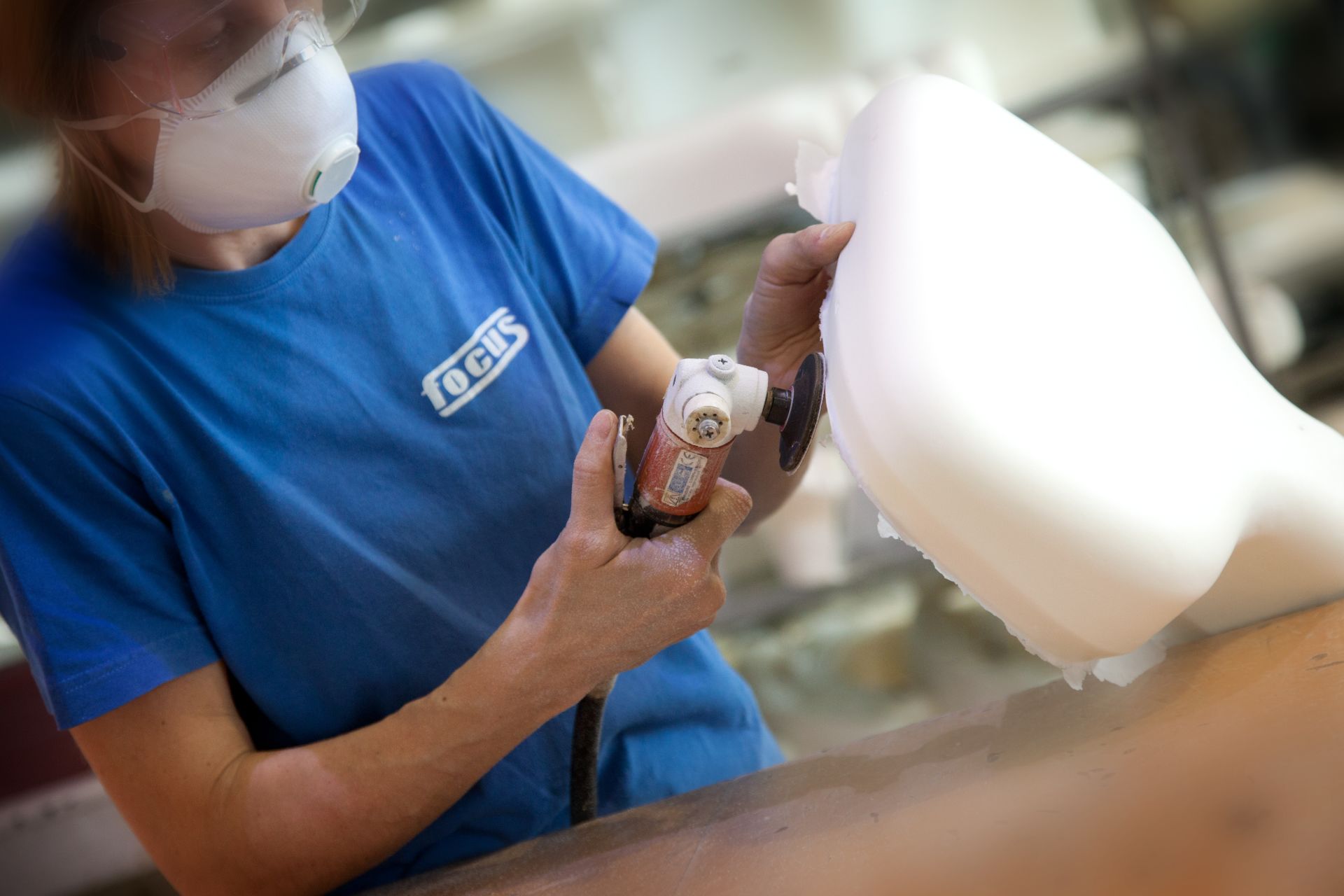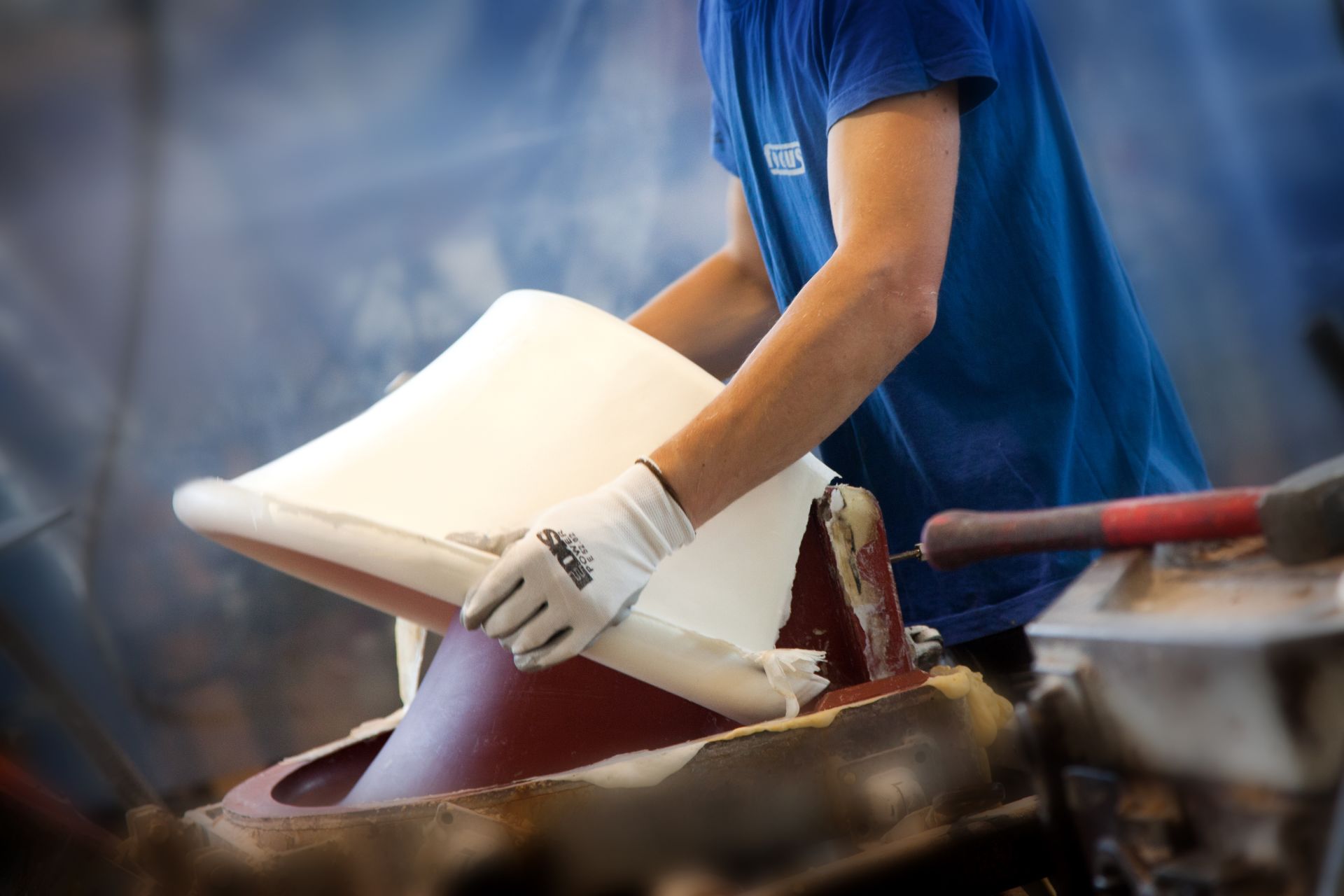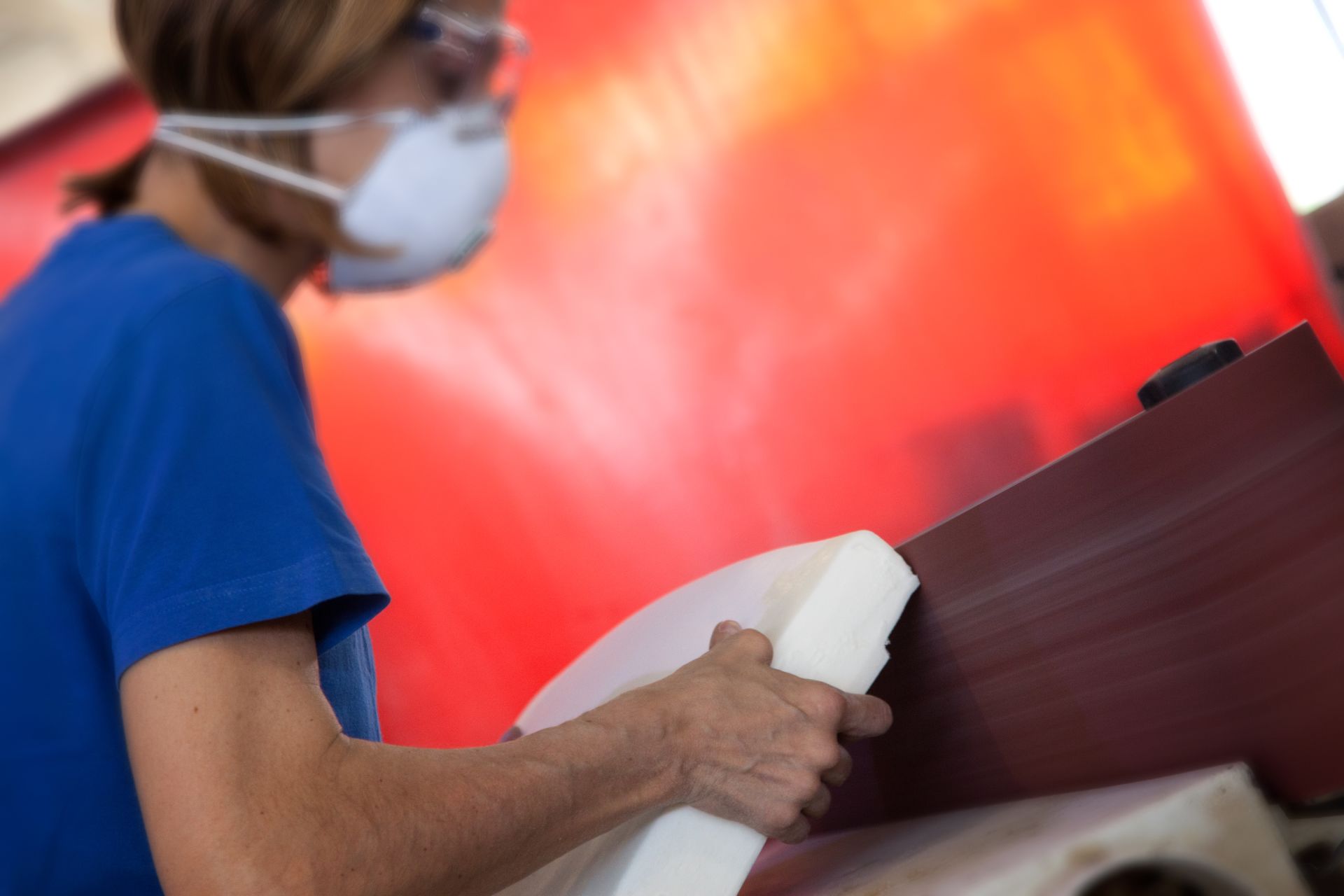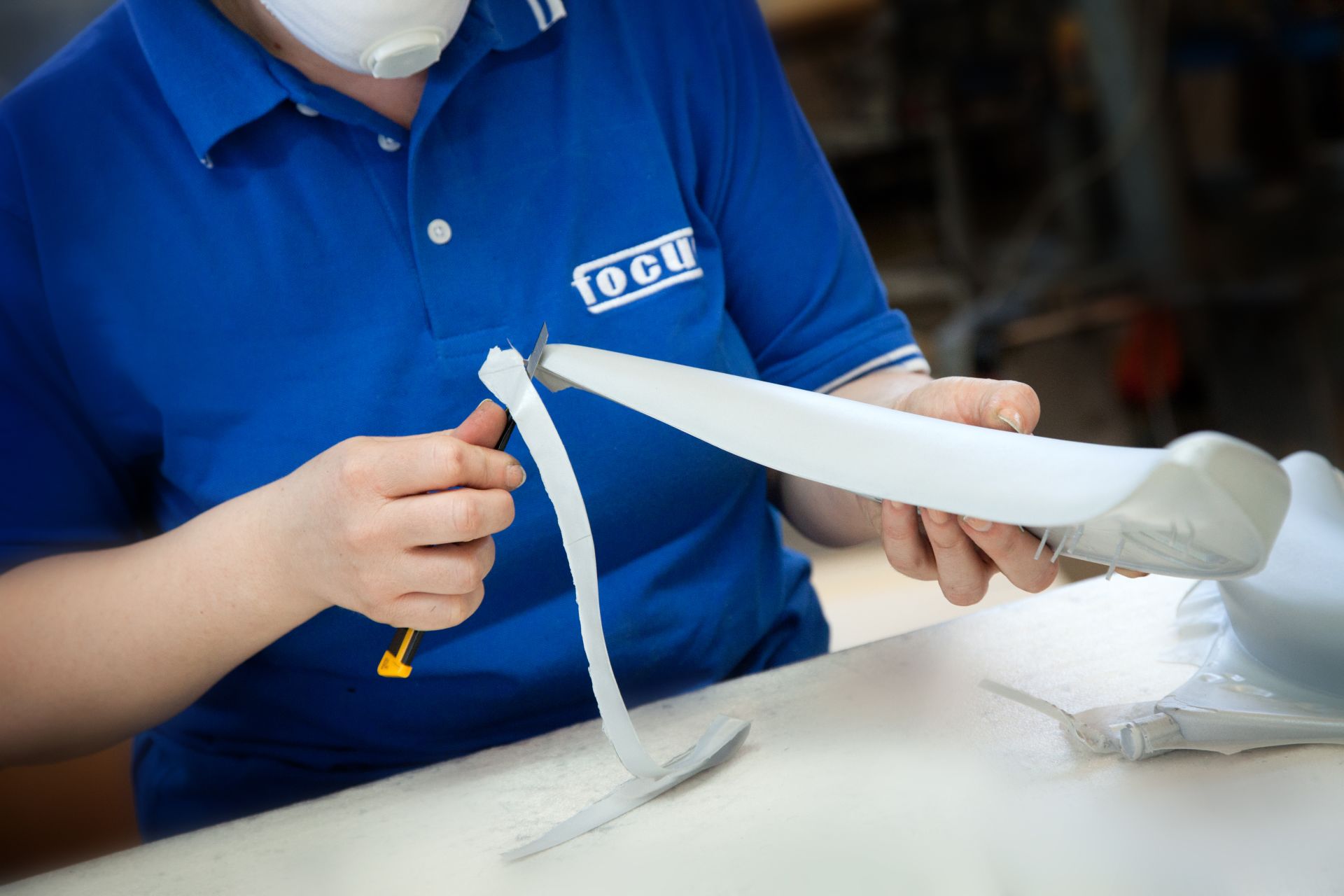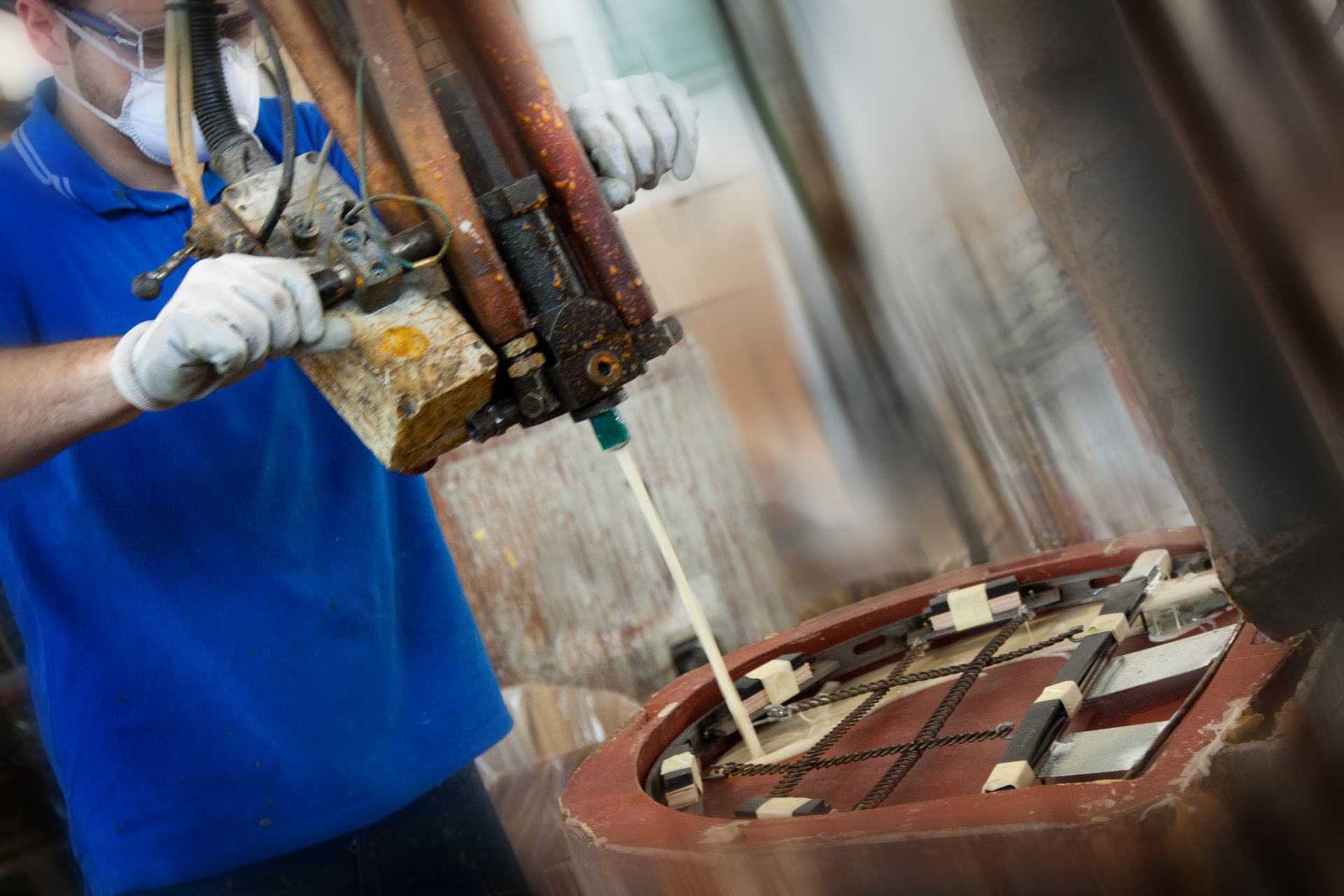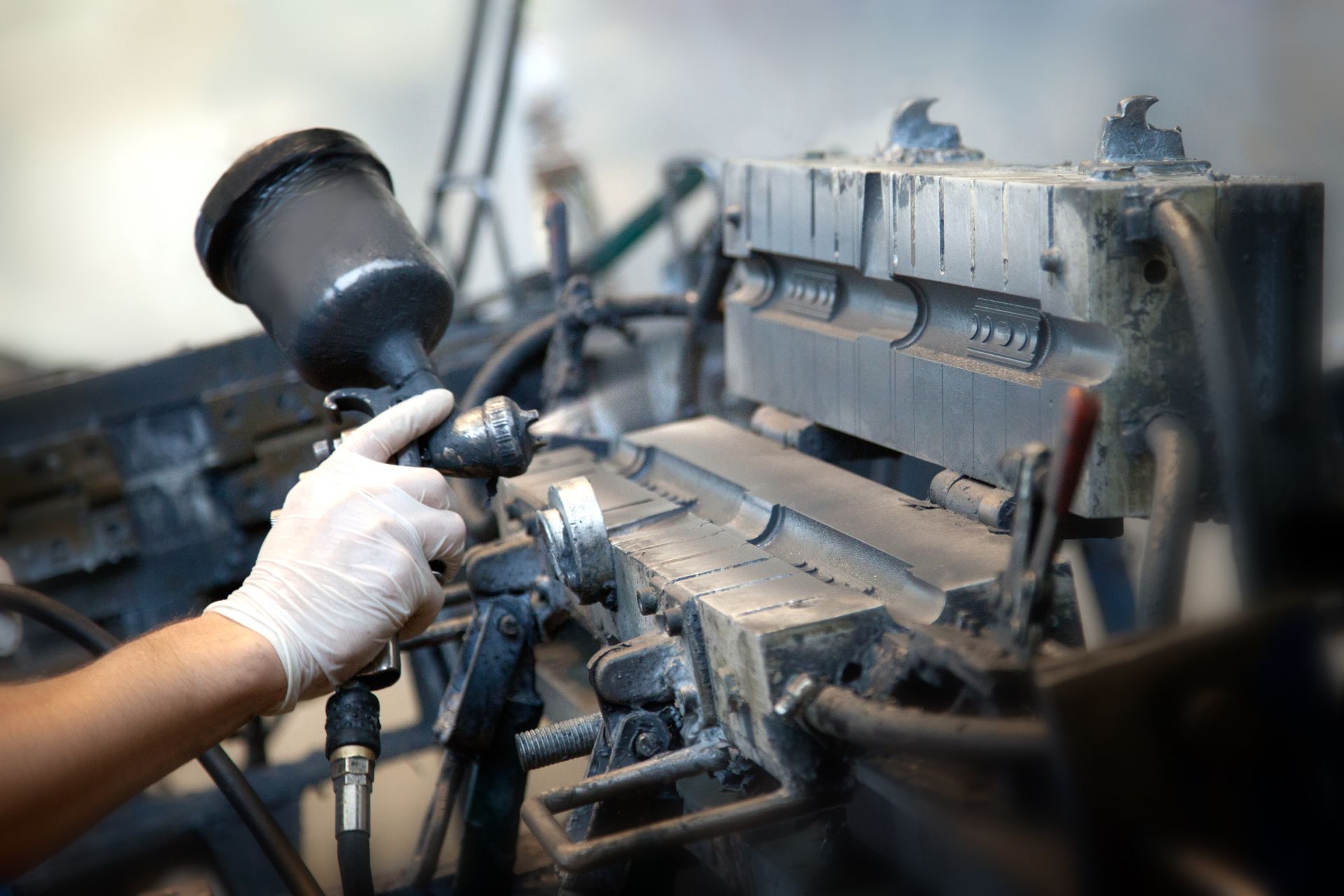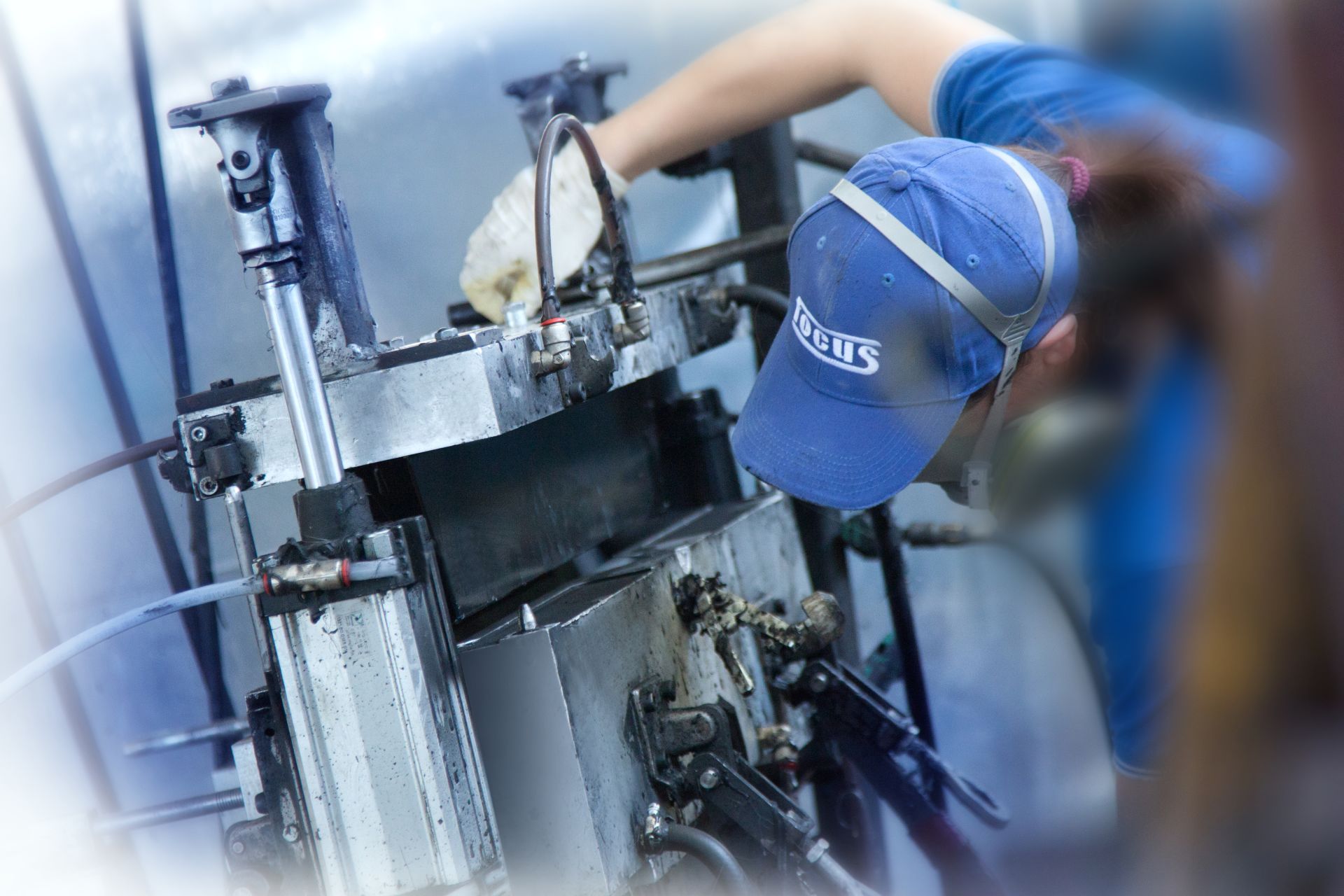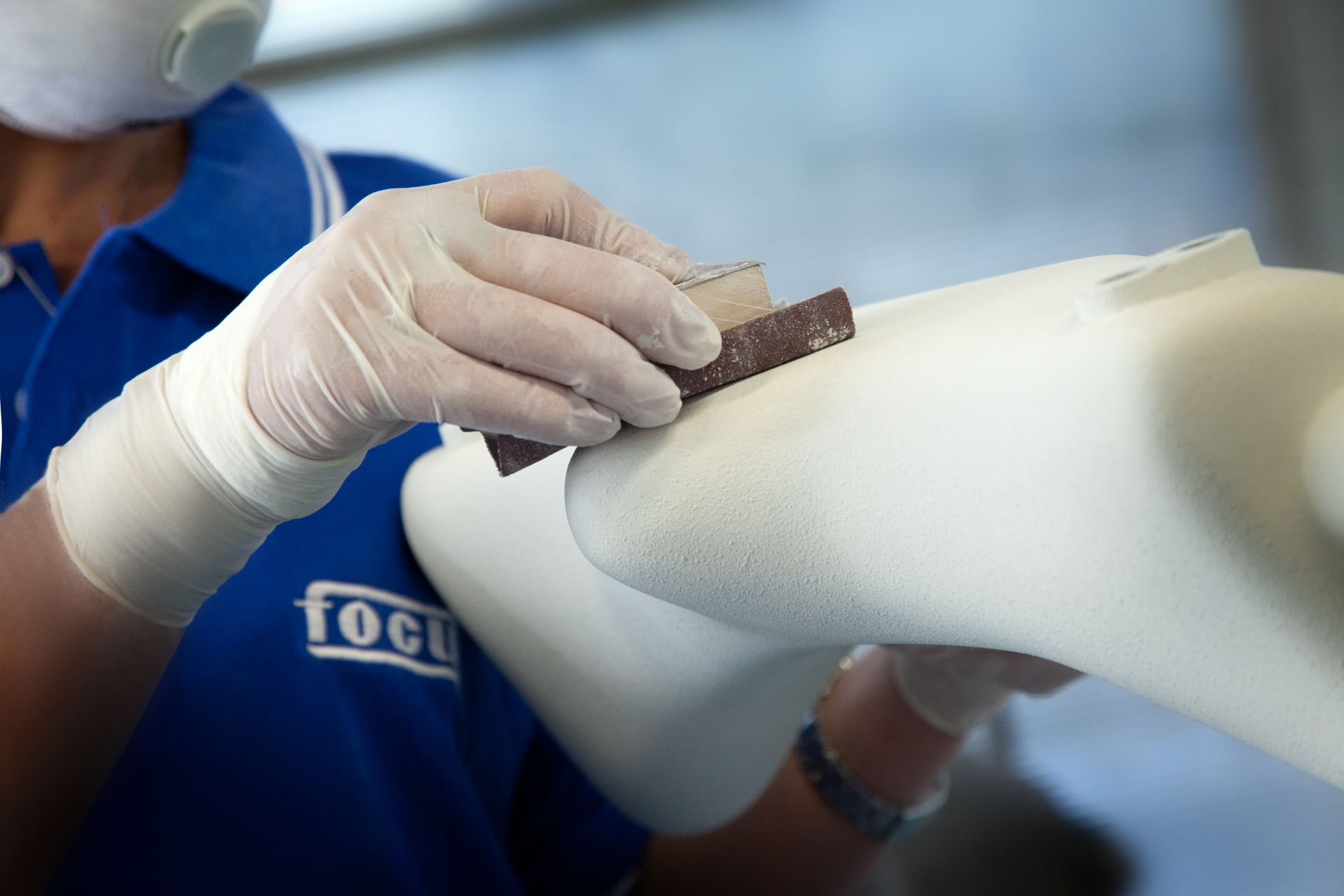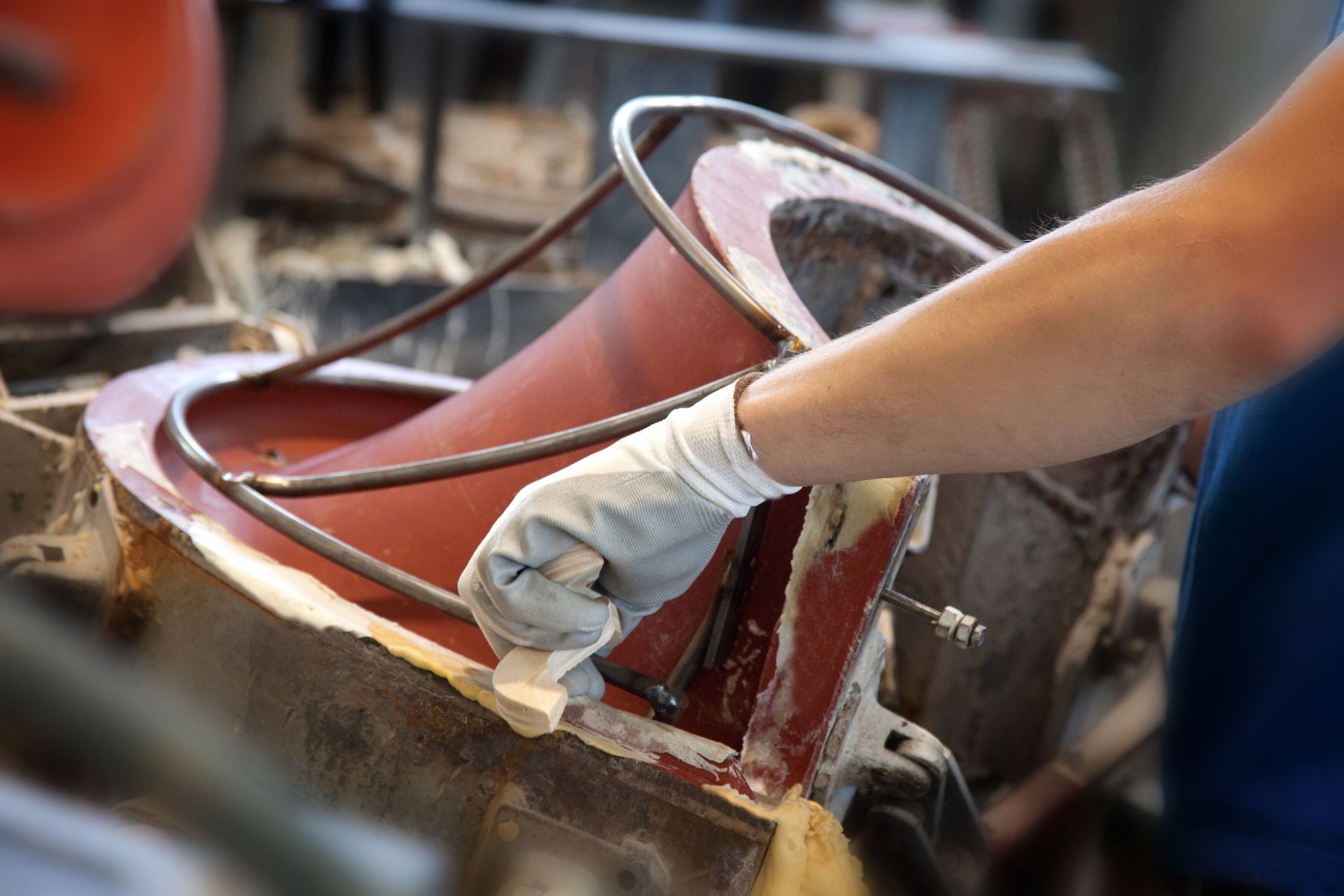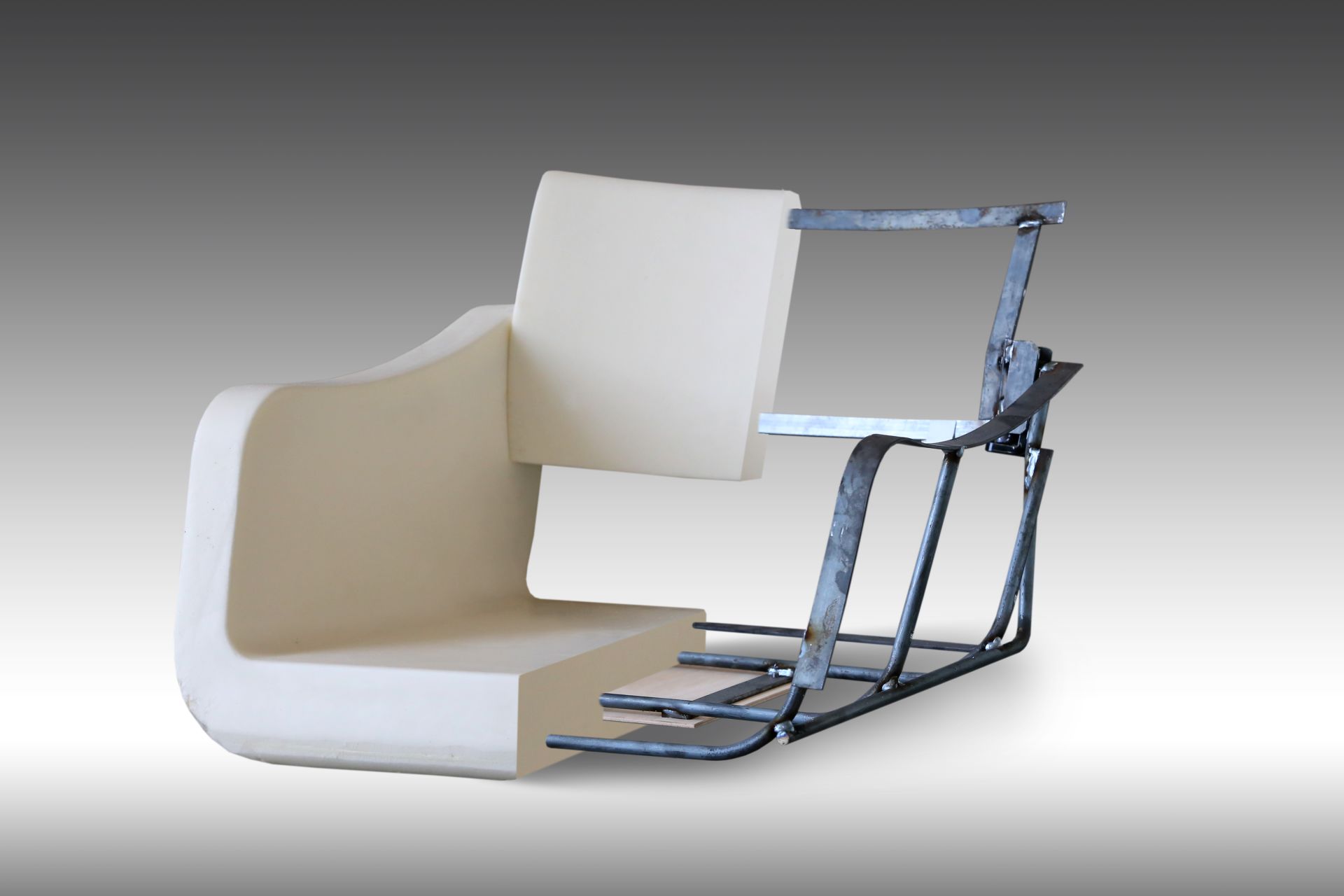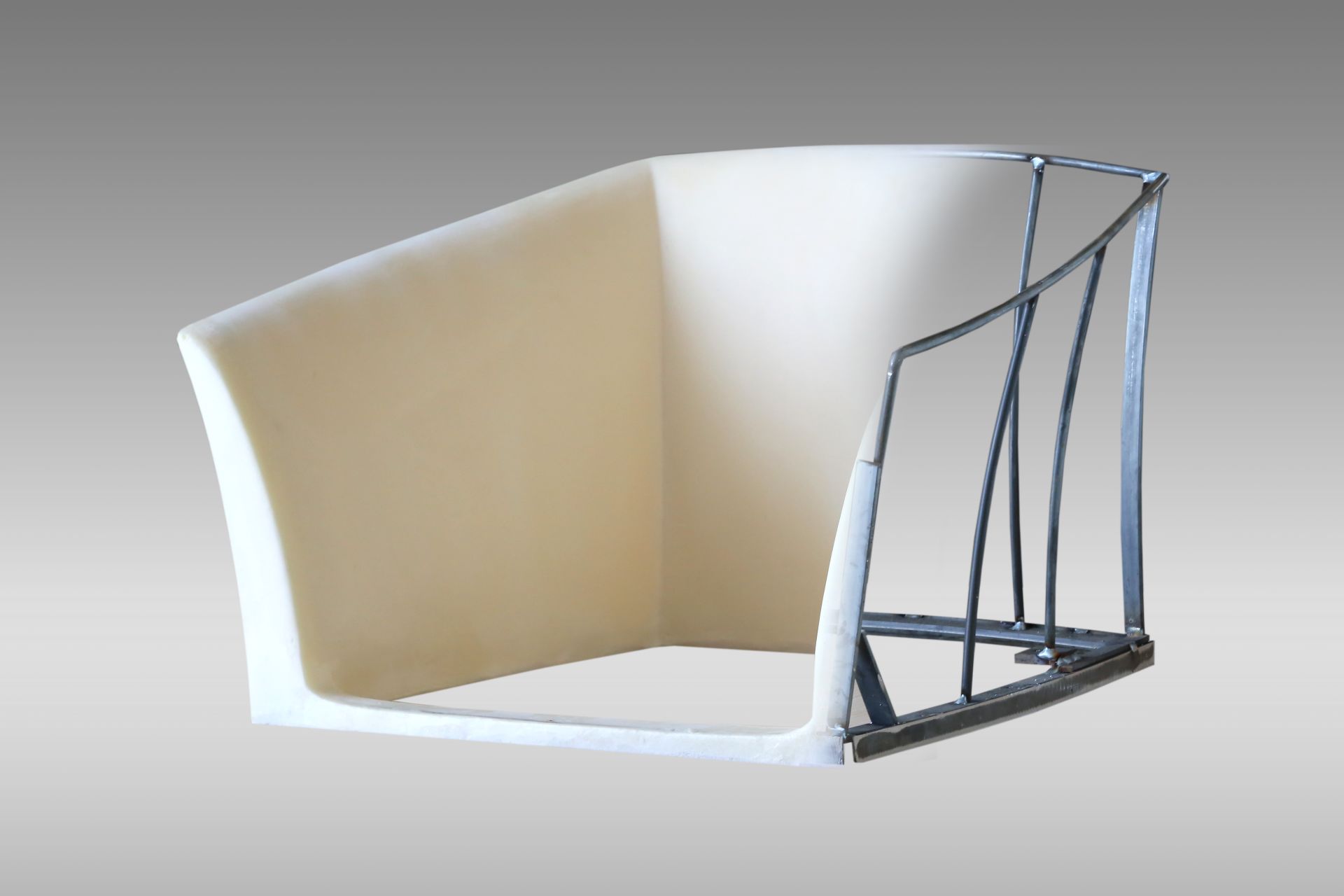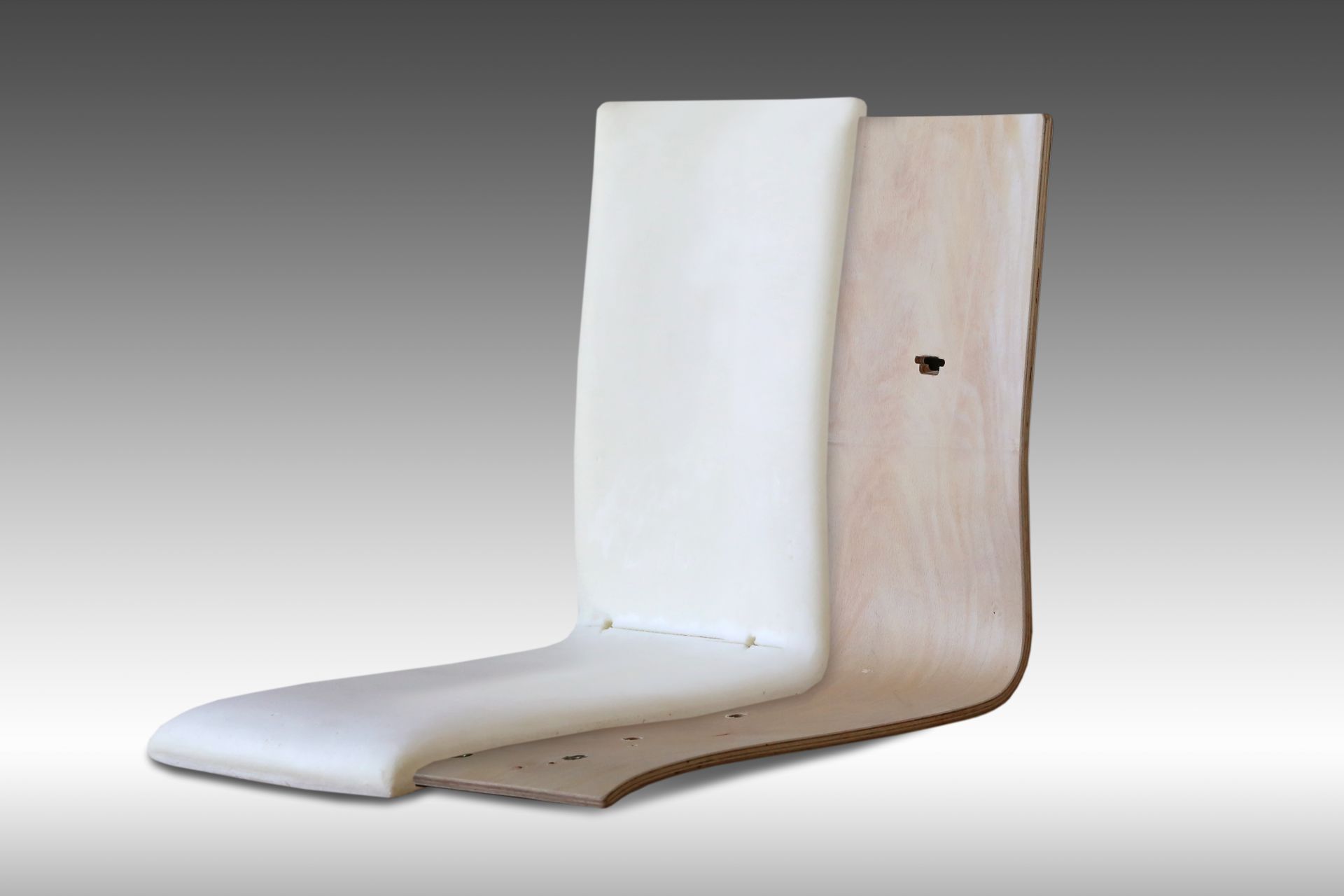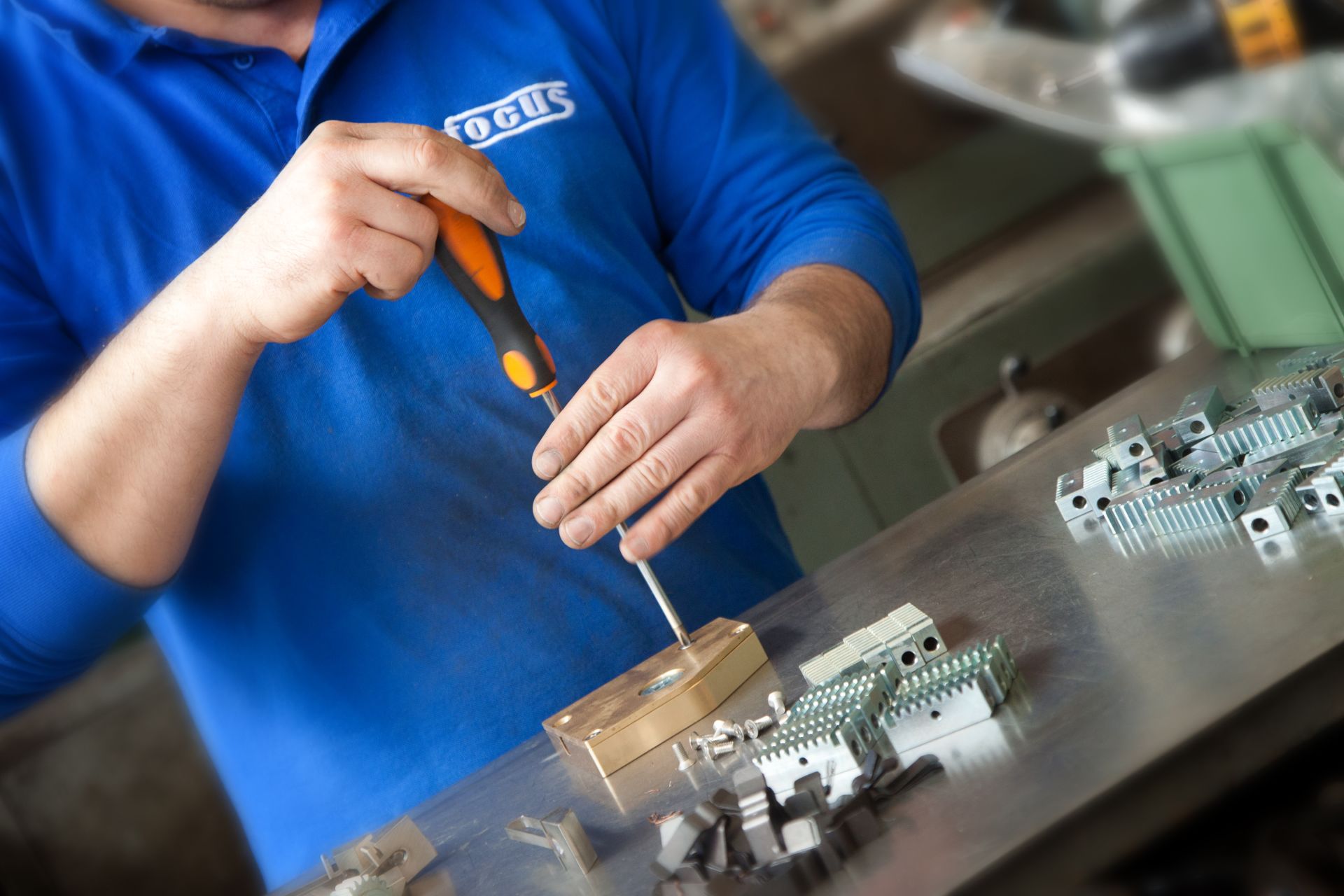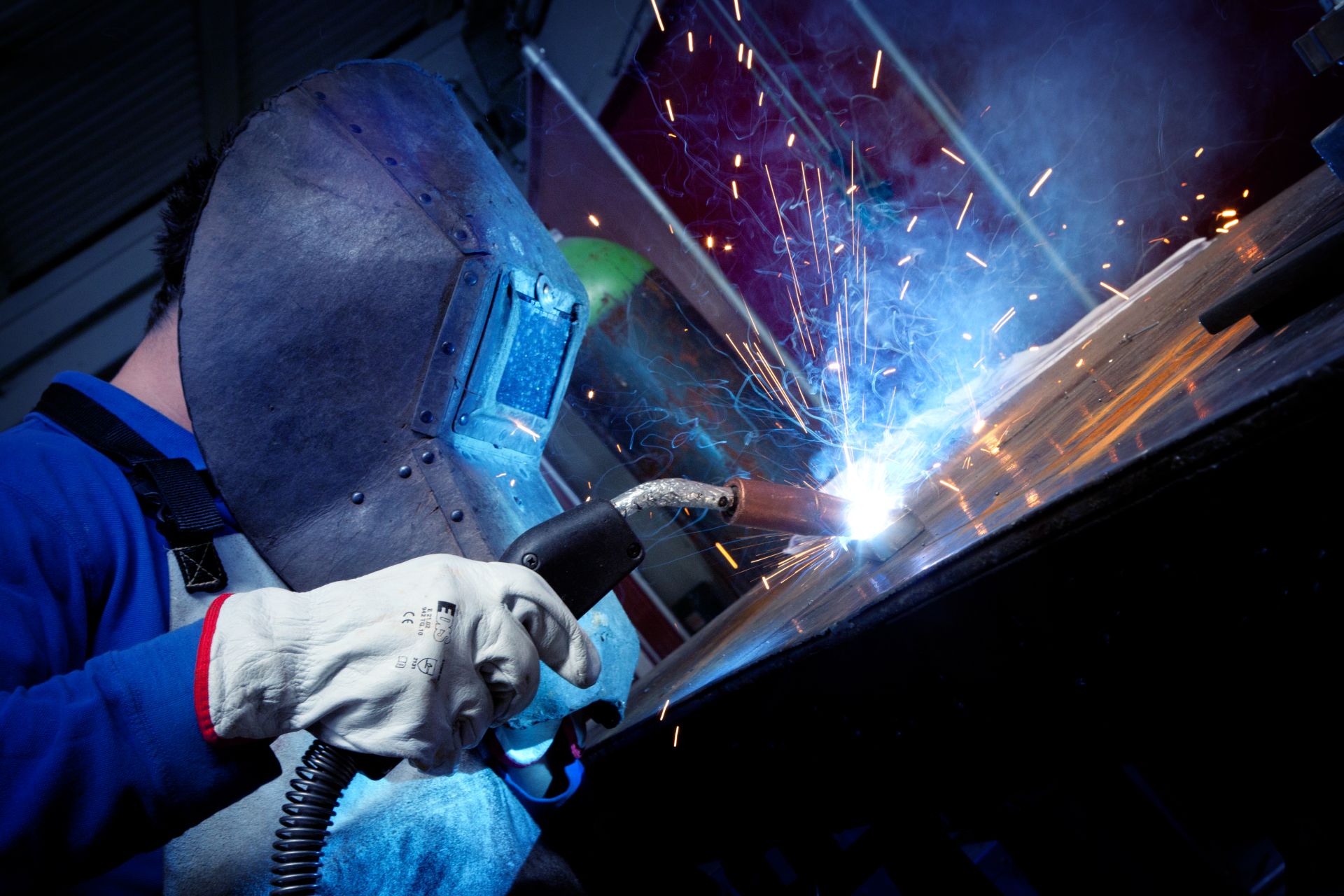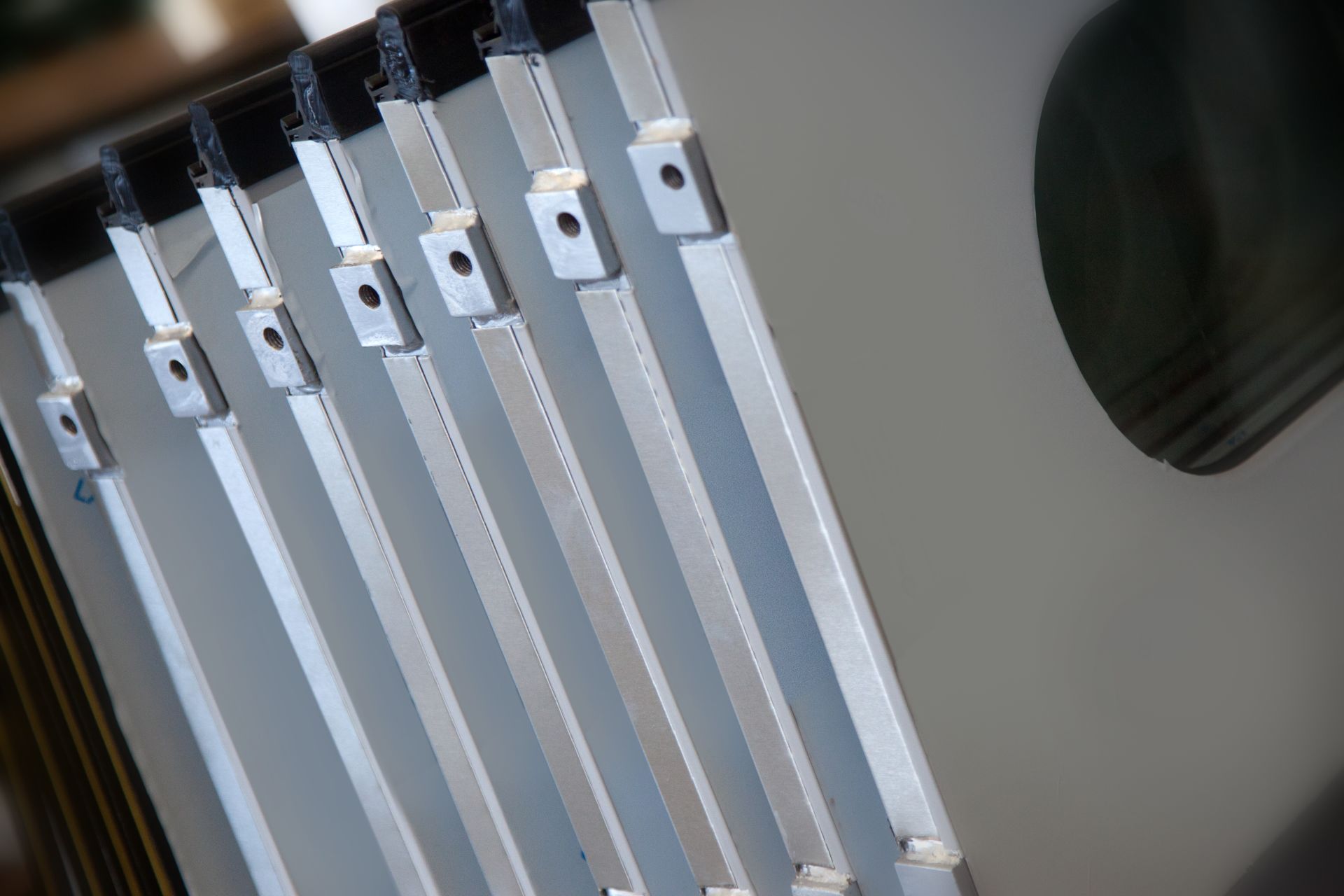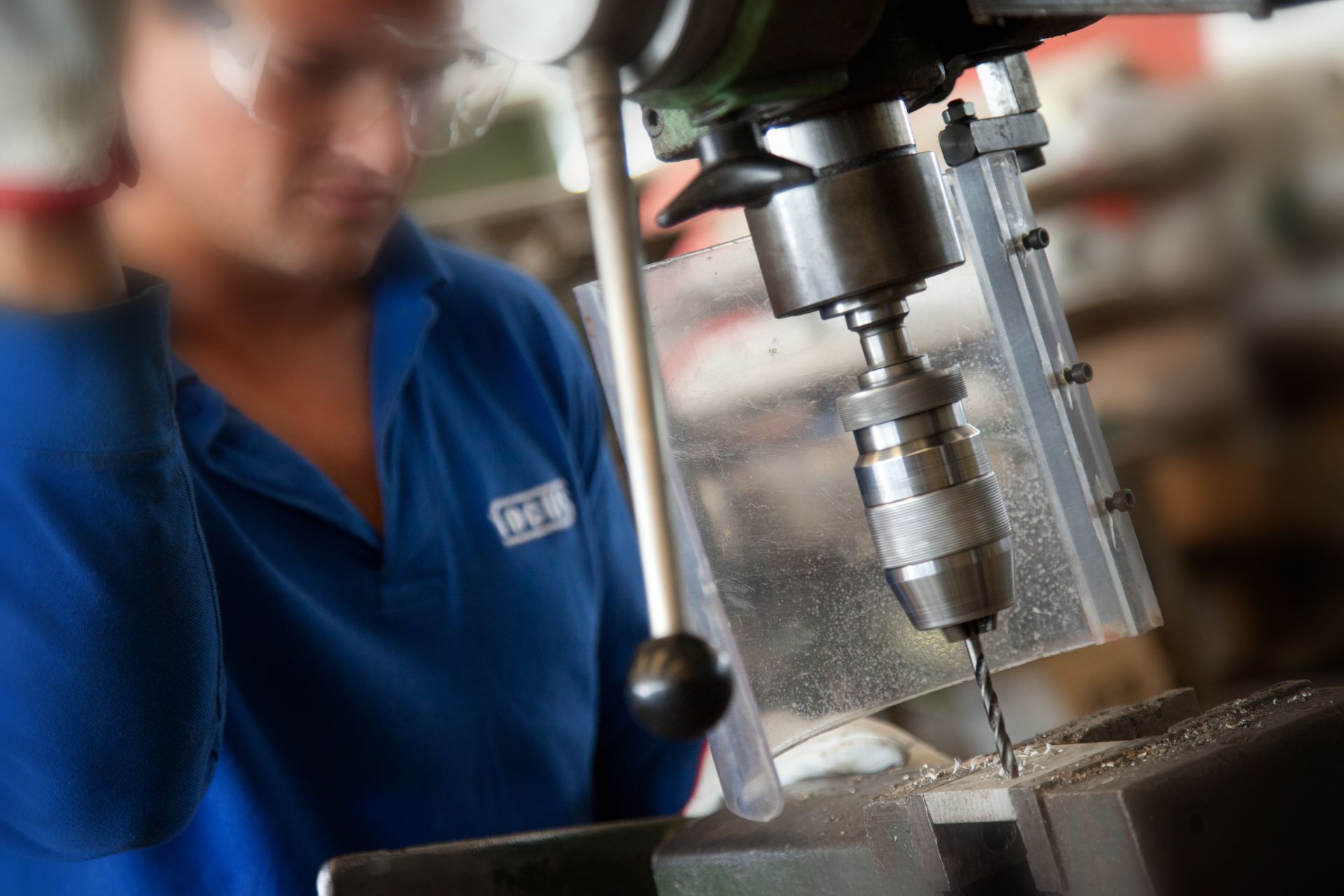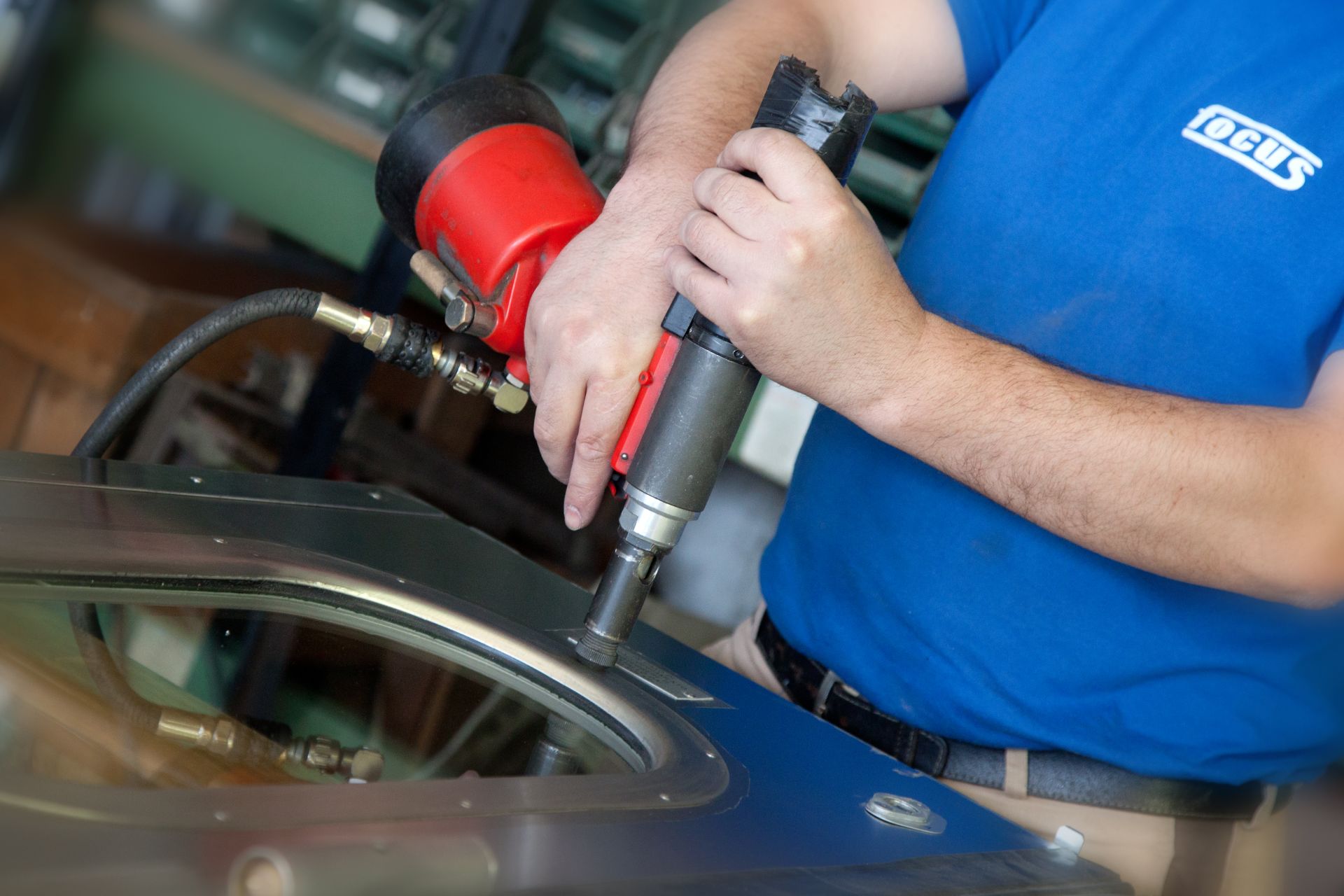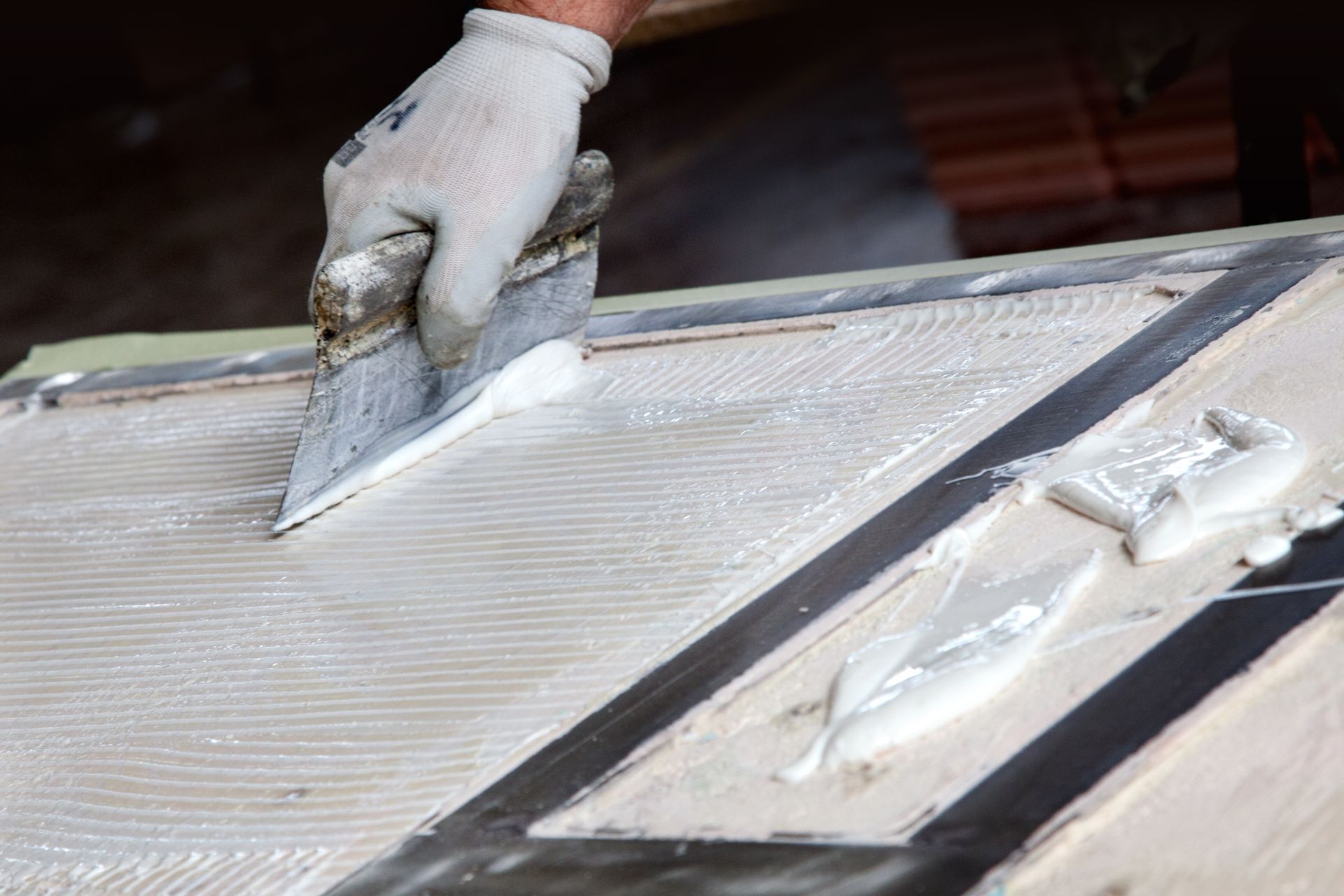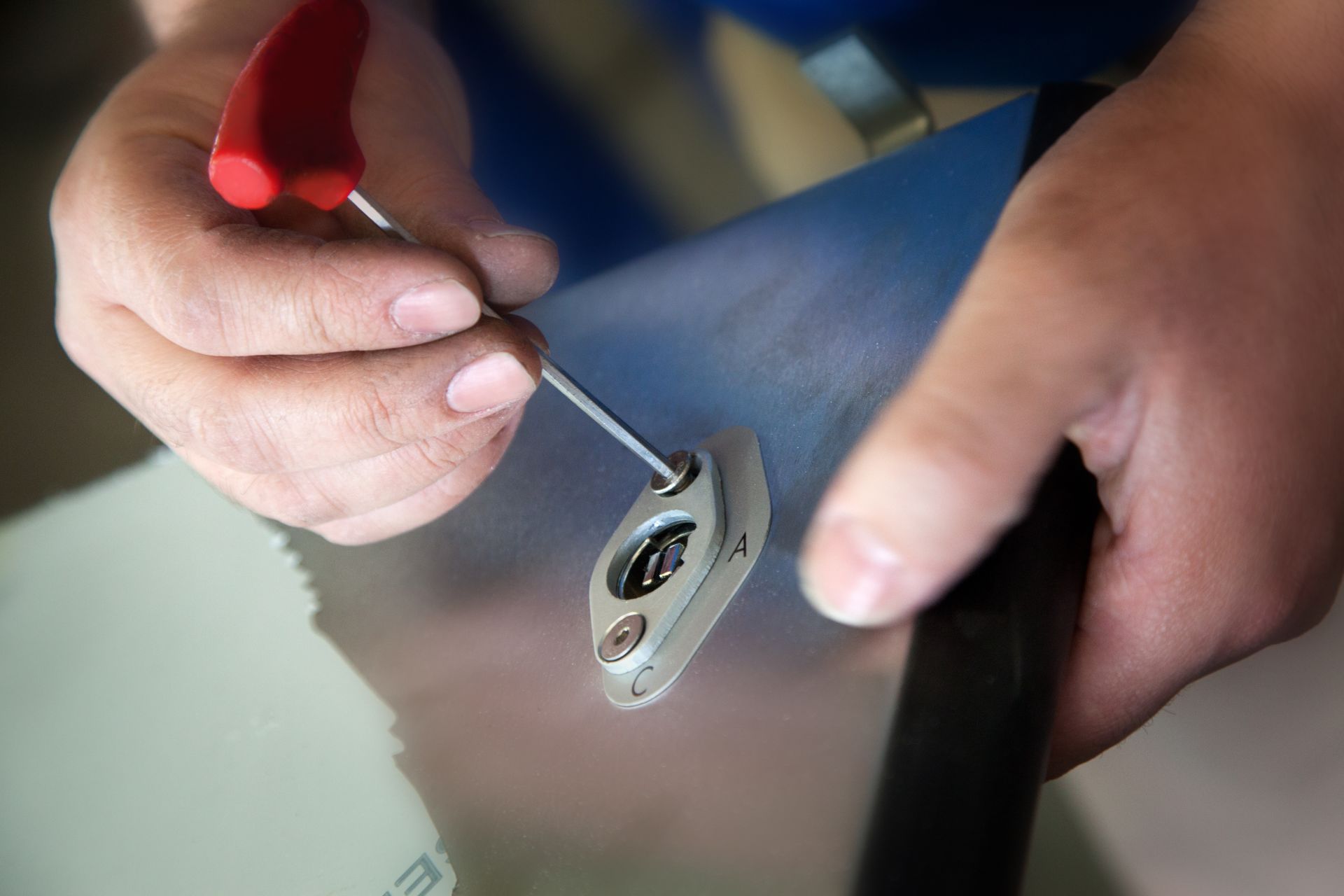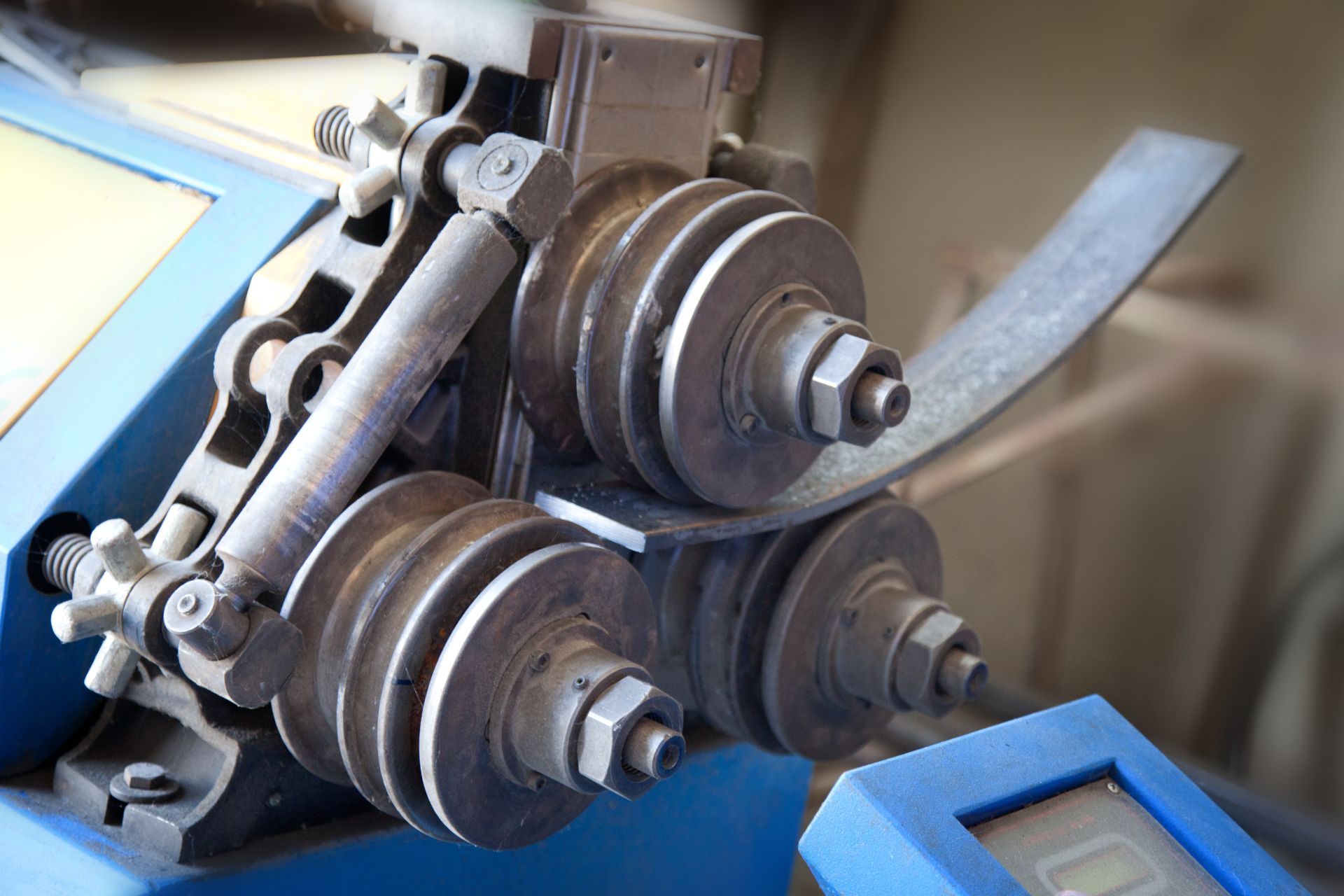Via Luigi Trezza, 5
37063 - Isola della Scala (VR)
ITALY
8:00 - 12:00
13:30 - 17:30
Monday - Friday
Processing
POLYURETHANE MOLDING
FOCUS has twelve production lines for the molding of the components in polyurethane foam:
- components in Flexible Polyurethane with and without internal structural inserts, intended for the production of particular upholstery complying with the main regulations, such as Italian, English and American for fire prevention
- components in Integral Self-Polishing Polyurethane, of various colors and different hardness and density
- components in Rigid Polyurethane of various densities: Low-Medium-High
The main supply sectors are as follows:
- office armchairs and chairs, homes, cinemas
- design
- saddles and accessories for mopeds
- passenger seats for trains, trams, buses and subway
- sports and gym equipment
- accessories for shower box-sauna and bathroom furniture in general
- soundproofing of industrial burners and machinery
- insulation
- components of cabins for operating machines such as seats, dashboards, grab bars, etc.
- components of attractions for amusement parks
- soundproofing in the automotive sector
- automotive, steering wheels, headrests, levers
The management of the machinery for the molding of polyurethane foam is governed by appropriate procedures and instructions for work and control. The raw materials used are covered by appropriate declarations of conformity issued by the supplier with respect to current legislation and the necessary technical and safety information.
In the event that the inserts or other components are supplied directly by the customer, these are checked, identified, handled and processed with the same criteria as those for the company product.
FOCUS is able to support the customer in all phases of conception, design, production of molds, production of samples of pre-series, etc.
The molds or other components supplied or commissioned by the customer remain the property of the customer.
POLYURETHANE CHARACTERISTICS
The flexible polyurethane foam identifies a large family of polymers obtained from the reaction between the two isocyanate and polyol monomers. The basic reaction for the production of polyurethane objects is as follows:
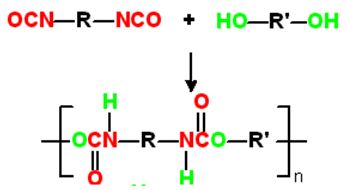
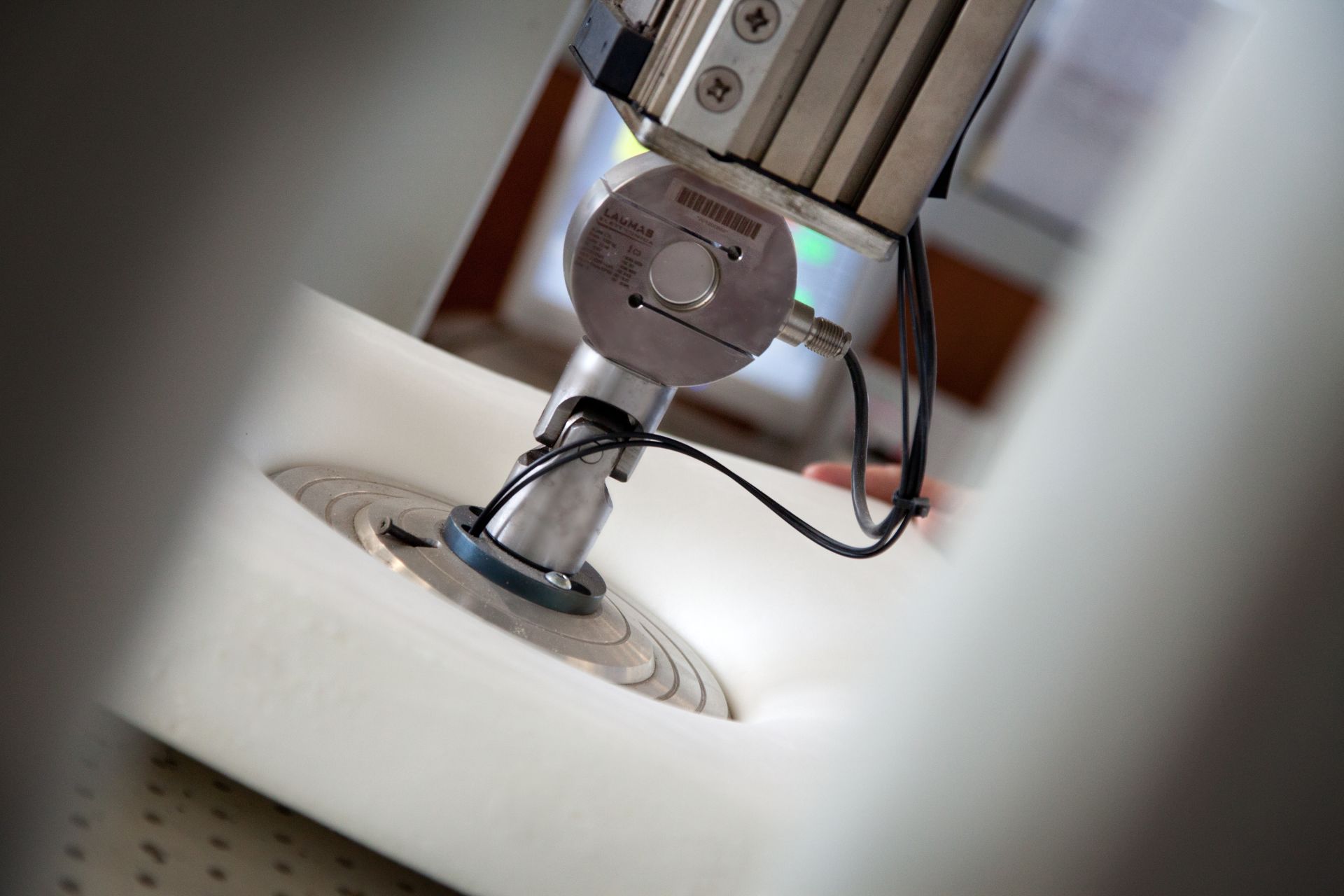
The great variety of each of the two basic monomers and the possibility of using different catalysts and additives allows to obtain a wide range of polymers that can be used for the most diverse applications such as, for example, flexible foams, self-curing furnishing agents, articles with reaction performance to fire, rigid or flexible items for thermal-acoustic insulation, rigid articles for technical purposes, etc.
In particular, FOCUS is able to produce:
- expanded for upholstery furniture
- expanded for upholstery in the collective transport sector and not
- expanded self-leveling expansi for furniture and technical items
- articles with flame retardant, thermoacoustic insulation, etc.
Further information on polyurethane: https://en.wikipedia.org/wiki/Polyurethane
MOLDS AND INSERTS
FOCUS has the necessary equipment and skills to support its customers in the design and manufacture of molds and inserts for molds.
The construction of the molds can use structural supports of various kinds and molding methods established according to the characteristics of the article to be produced.
Metal components, polyester rfv or other suitable material are normally used.
Inserts and structures can be made and / or assembled, on behalf of the customer, with wood, metal or other composite material required by the project.
Molds, inserts and supports made on behalf of the customer remain the property of the same even if they are left in storage at FOCUS.
RAILWAY SECTOR
FOCUS has the skills and equipment necessary for the realization of many types of mechanical and composite components such as, for example:
- railway REI doors and walls
- head and lift doors for locomotives
- head and lift doors of railway carriages
- windows and walls
- railway furnishing accessories in general
The achievements are supported by the availability of the necessary technologies and knowledge of:
- welding and painting
- mechanical machining in general
- foam resin foaming
- bonding
- assembly
The use of expanded phenolic resin, as a fire-retardant material, combined with other specific intumescent materials, has led FOCUS to specialize in the field of fire suppression and to be completely autonomous in their construction.
Operational activities are governed by procedures and instructions that ensure that the client complies with contractual and legislative requirements. The procedures also include the aspects related to control, when required for identification and traceability, packaging and handling up to shipment and delivery to the customer.
The raw materials used are covered by appropriate declarations of conformity issued by the supplier with respect to the binding legislation and / or the necessary technical and safety information.
PHENOLIC RESIN CHARACTERISTICS
The phenolic resins are obtained from the reaction between the two phenol and formaldehyde monomers. The basic reaction for the production of phenolic resin objects is as follows:

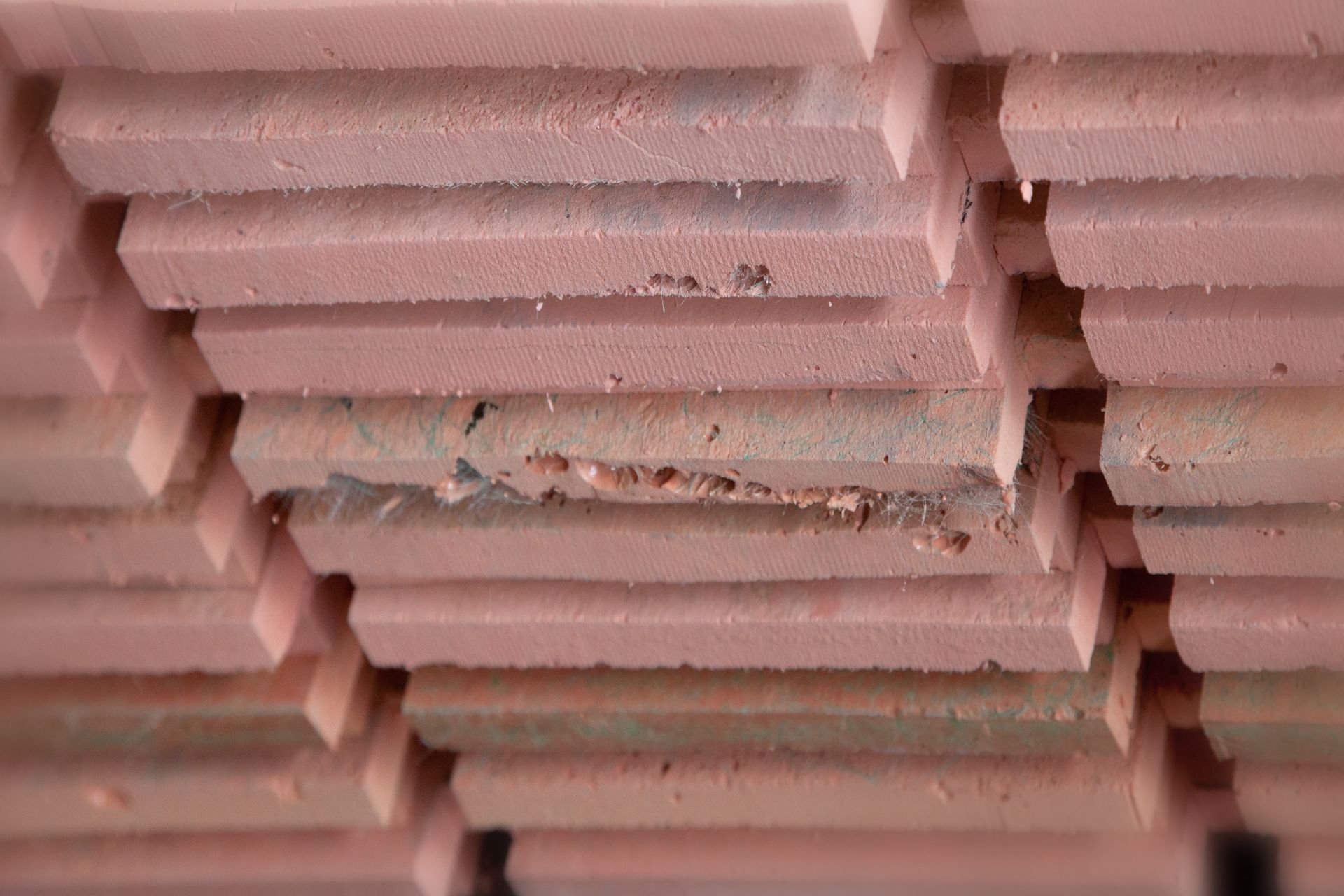
Phenolic resins, typically thermosetting, can be obtained with different characteristics from the qualitative and quantitative combination of the monomers that enter the synthesis reaction.
FOCUS has introduced phenolic resins in the production of doors for which an excellent reaction to fire is required together with mechanical and thermal-acoustic insulation requirements.
The trademark used by FOCUS for this product is called "GLASFEN".
The most important features of GLASFEN are:
- high fire resistance
- excellent self-extinguishing characteristics
- low smoke emission
- low toxicity of pyrolysis gases
- high mechanical strength
- dimensional stability even at high temperatures
- resistance to chemical agents
- insensitivity to micro organisms
- discreet acoustic insulation
Our Phenolic Resin is compliant with EN 45545-2:2013 + A1:2015 regulations.




